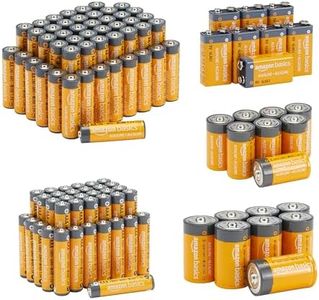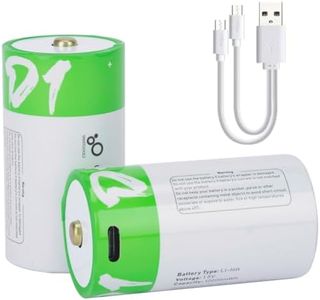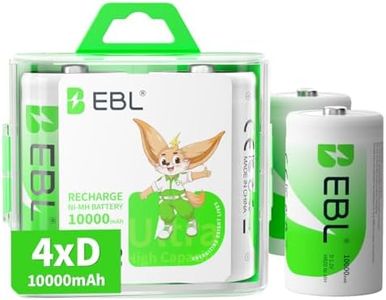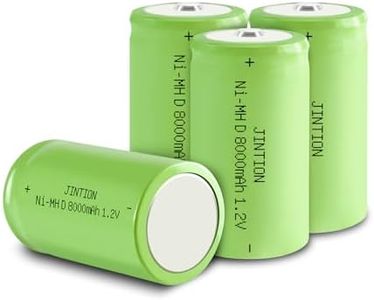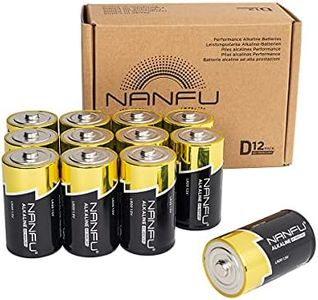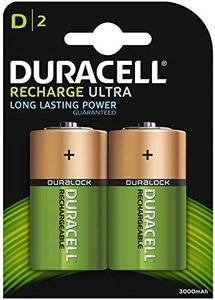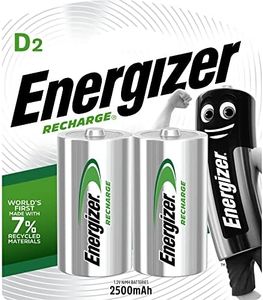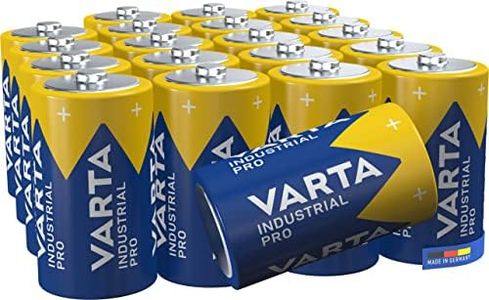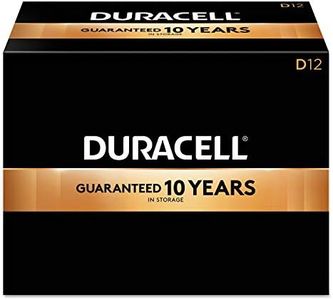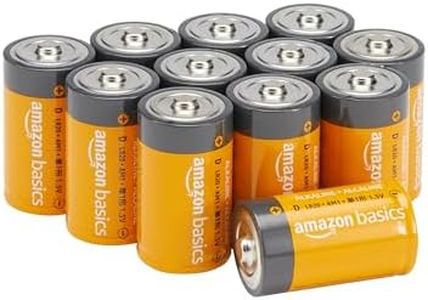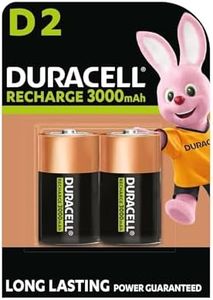We Use CookiesWe use cookies to enhance the security, performance,
functionality and for analytical and promotional activities. By continuing to browse this site you
are agreeing to our privacy policy
10 Best D Batteries
From leading brands and best sellers available on the web.By clicking on a link to a third party's website, log data is shared with that third party.
Buying Guide for the Best D Batteries
When shopping for D-batteries, it’s helpful to know that these are large cylindrical batteries commonly used in flashlights, radio receivers, large toys, and other devices that require substantial amounts of energy over a period of time. Not all D-batteries are the same – differences in chemistry, capacity, and rechargeability can make a big difference depending on how and where you plan to use them. Understanding the main specifications can help ensure you pick a battery that meets your needs and lasts as long as you expect.Battery ChemistryBattery chemistry refers to what the battery is made of inside and how it stores energy. The most common types you’ll encounter are Alkaline, NiMH (Nickel-Metal Hydride), and Lithium. Alkaline D batteries are widely available, good for general use, and provide steady power for typical home devices. Rechargeable NiMH D batteries are better for frequent use and are more eco-friendly because they can be charged and reused hundreds of times. Lithium D batteries last a very long time and perform well in extreme temperatures, making them ideal for high-drain devices or outdoor use. When deciding, think about your device: for rare use, alkaline may suffice; for regularly used devices, rechargeables are usually best; and for long-term reliability or challenging environments, lithium is often superior.
Capacity (mAh)Capacity is measured in milliampere-hours (mAh) and tells you how much energy the battery can store—the higher the number, the longer the battery is expected to power your device. D batteries can range widely in capacity, with disposables often around 12,000-18,000mAh and rechargeables sometimes slightly less. If your device uses a lot of power or you want it to run for a long time between battery changes, choose a higher mAh. For items used only occasionally, a moderate capacity may be all you need.
VoltageVoltage indicates the electrical potential provided by the battery. Most D batteries deliver a voltage of 1.5V for single-use types (alkaline or lithium), while rechargeable D batteries are usually 1.2V. This small difference is generally safe for most modern devices, but if your equipment is sensitive or specifically requires 1.5V for optimal performance, stick with non-rechargeable types. For most applications, either voltage will work fine, but always check your device's requirements.
RechargeabilitySome D batteries are single-use and must be discarded after depletion, while others can be recharged and reused. Rechargeable batteries save money and reduce waste when you use the batteries often or in high-drain devices. However, if your needs are sporadic or the device sits unused for long periods, disposable batteries can keep a charge longer on the shelf. Consider how frequently you’ll use the battery: more frequent or ongoing use tends to favor rechargeables, while rare or emergency use leans towards non-rechargeables.
Shelf LifeShelf life means how long a battery can sit unused and still provide reliable power. Some D batteries, like alkaline and lithium, can maintain their charge for several years if properly stored, making them great for emergency kits or devices that aren’t used often. Rechargeable batteries generally have a shorter shelf life as they lose charge over months even when not in use. If you plan to store the batteries for emergencies or use them infrequently, choose a type known for long shelf life.
